Design Process
I have printed three vessel works based on the different radial functions. One is the polygon function, and the other is the flower function. For the first vessel, based on the polygon function in class, I thought of some ancient pottery I had seen before. Although the shape is very simple, I think it is very good. In order to achieve the standard of this assignment, I made some changes, including twist and editing its height and angle. For my second and third vessels, my inspiration comes from an ancient food vessel with the outline of a petal. Before this, I have experimented with many complex contour curves, but they are either difficult to design into the shape of a vessel, the middle is hollow, or the three-layer structure has too different shapes, and it is difficult to complete the Loft command to build a plane. So the simple contour curve of the petal is very suitable for completing such a task.
Image
First Vessel

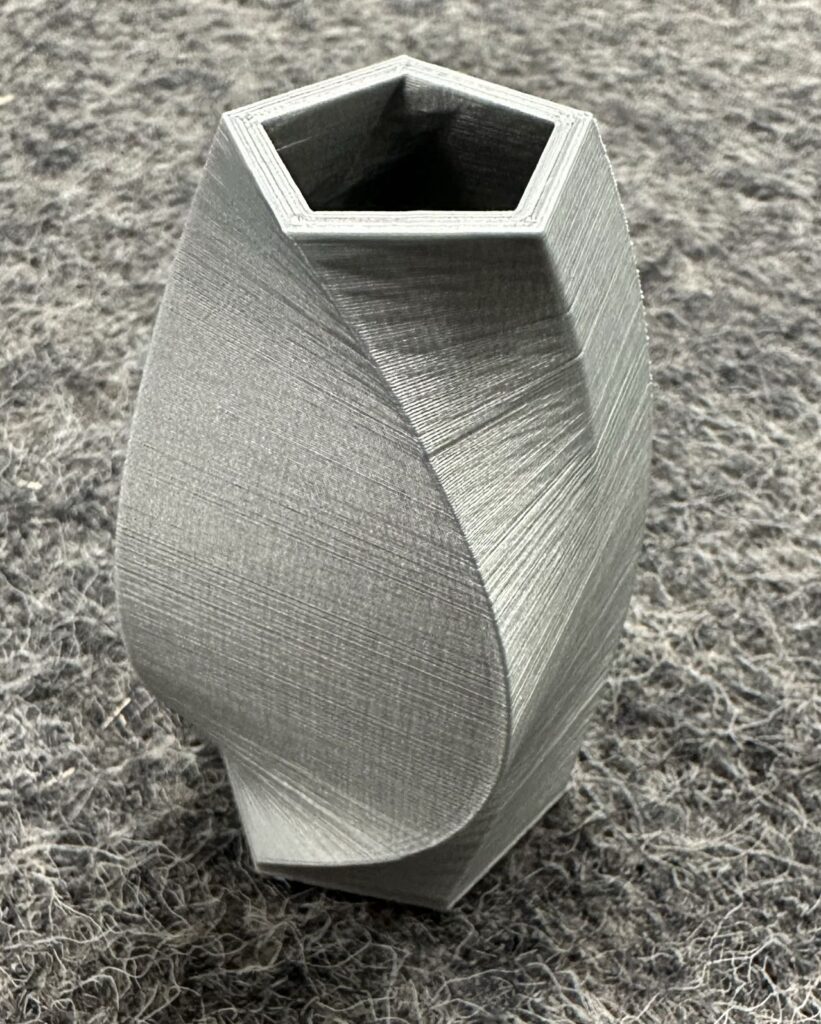
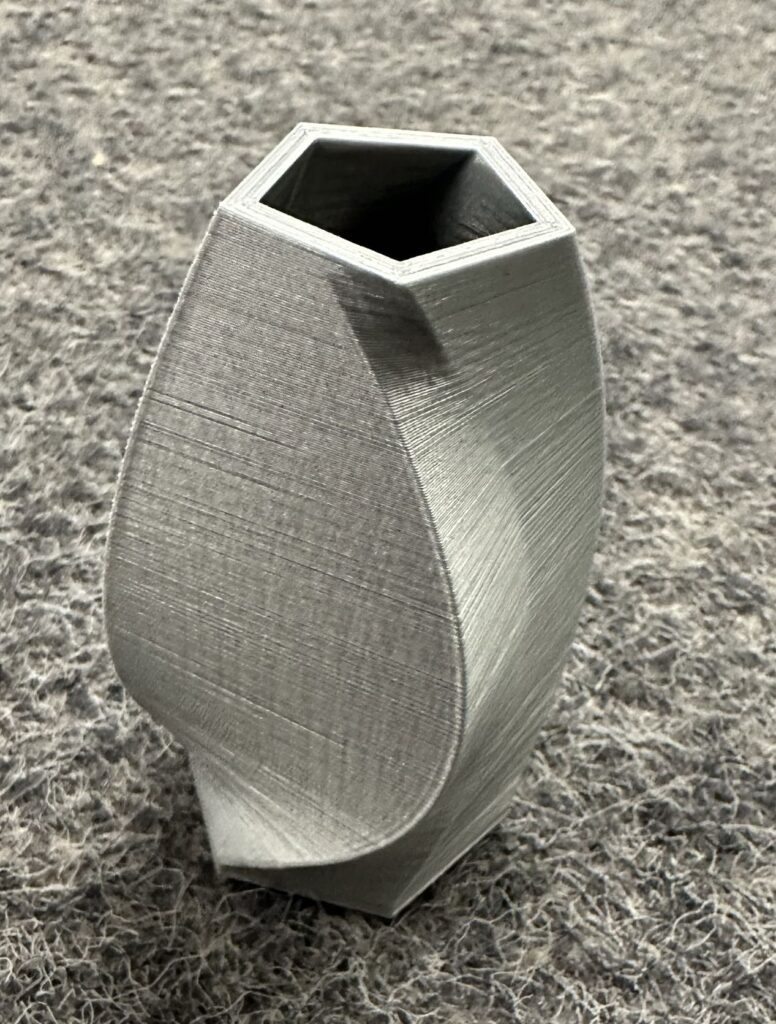

The first picture is the final print result, and the English name of the pottery in the second picture is Pottery, five-cornered deep bowl. The Chinese name is 陶器 五角深鉢, and the Japanese name is 黑~ thin tea まだら. Although in my opinion the final shape is different a lot, but its initial edge contour curve is my starting point.
Second and Third Vessels

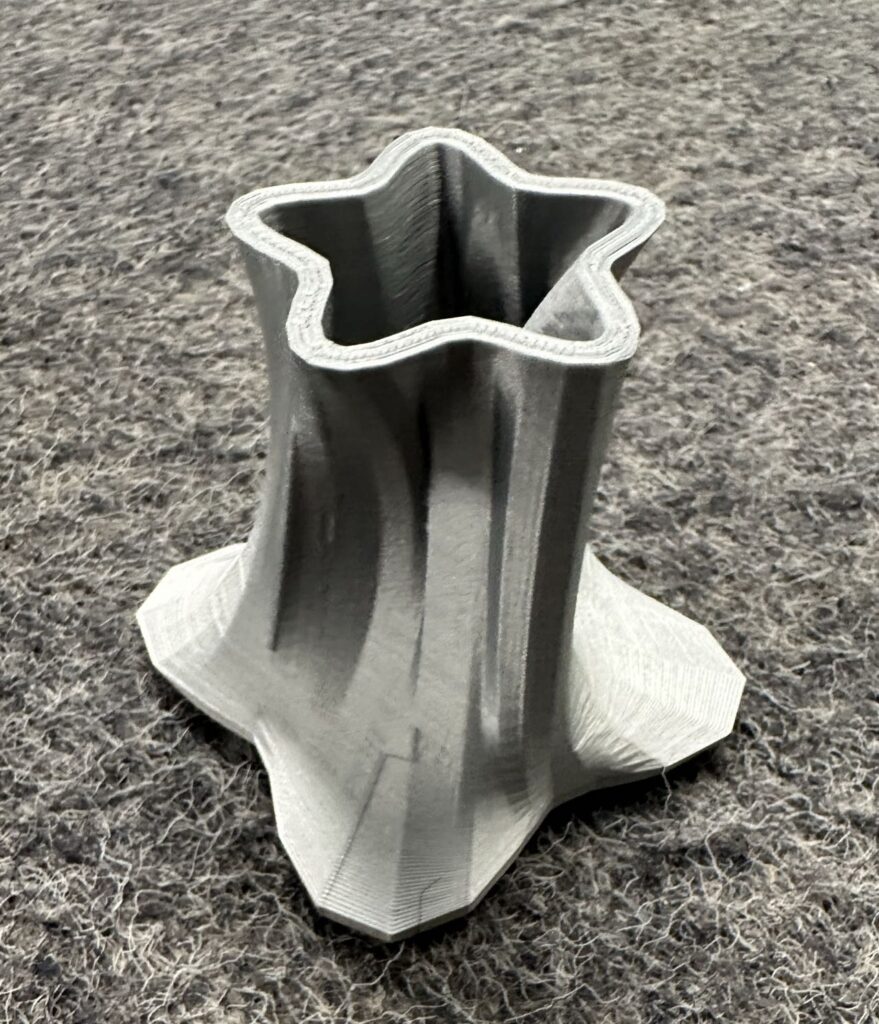
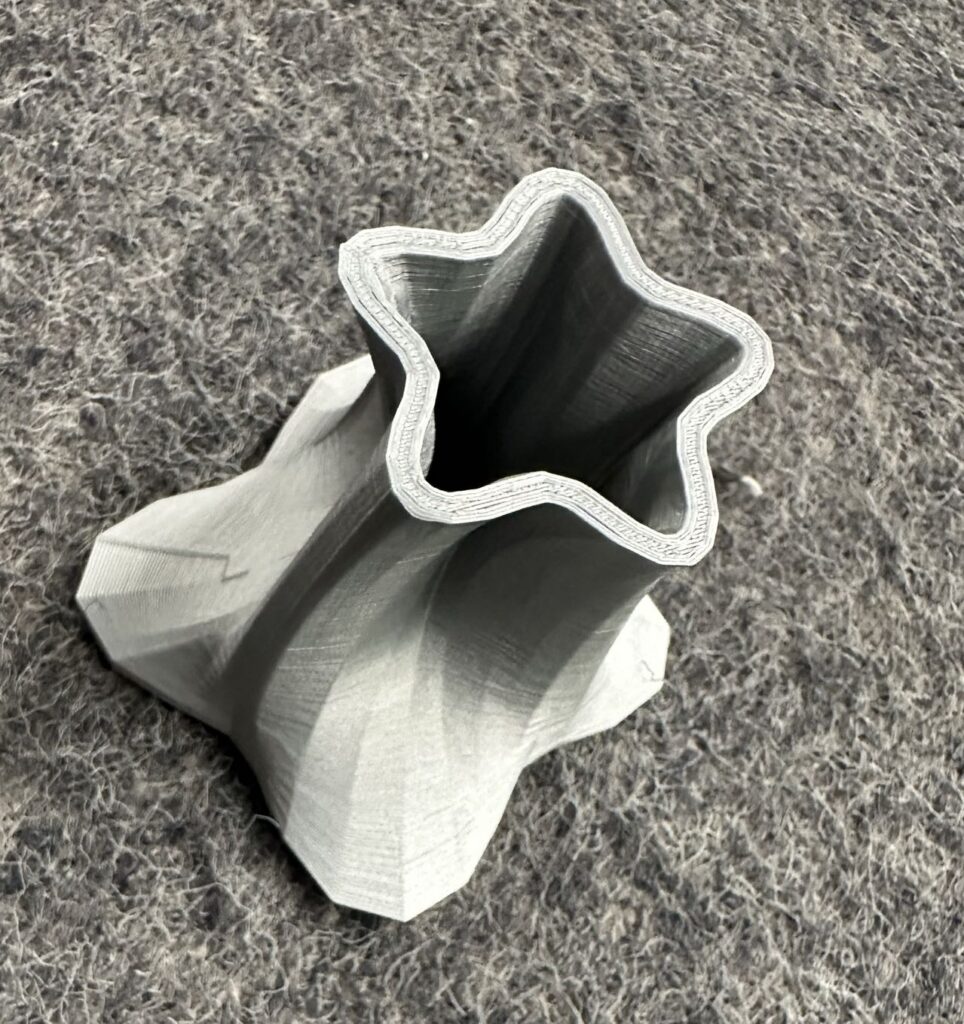

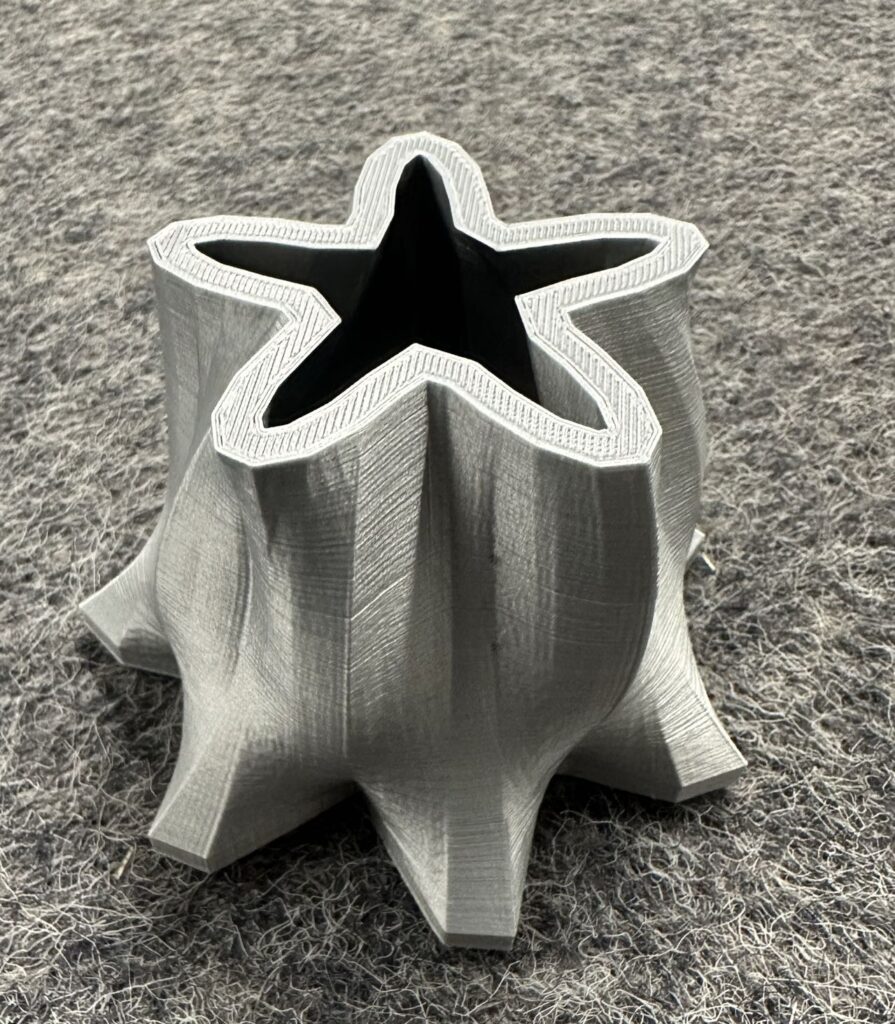
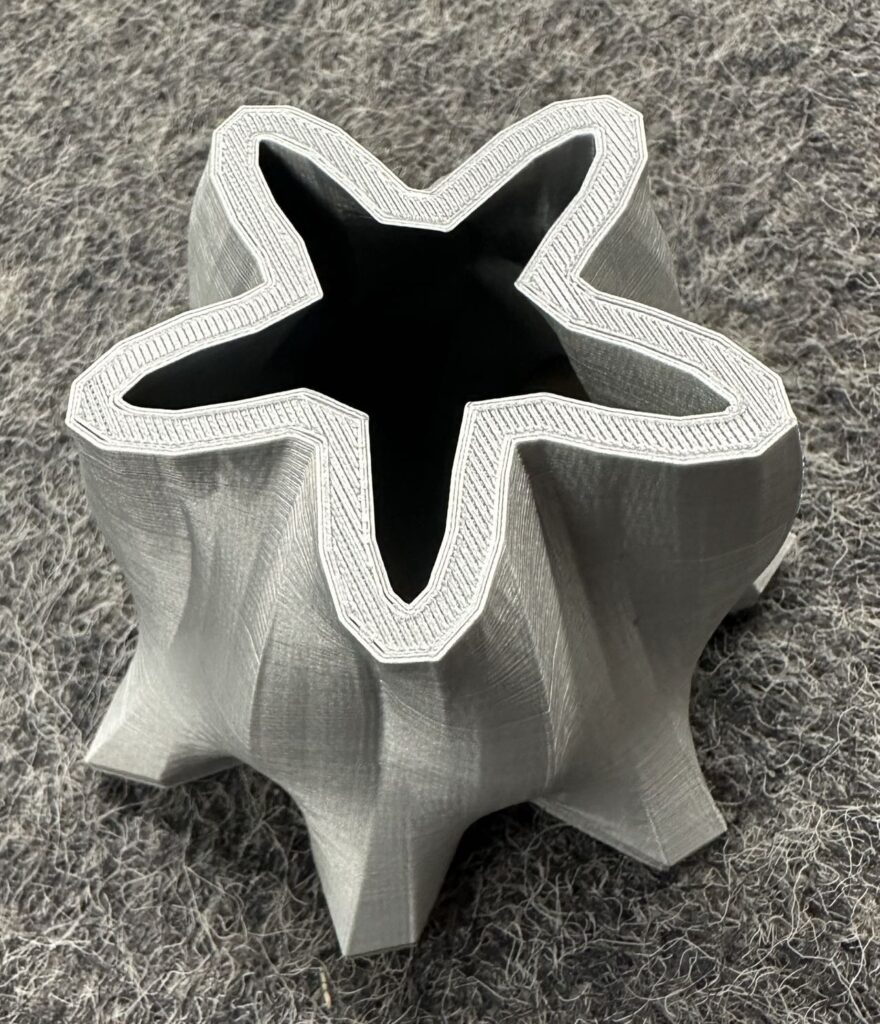
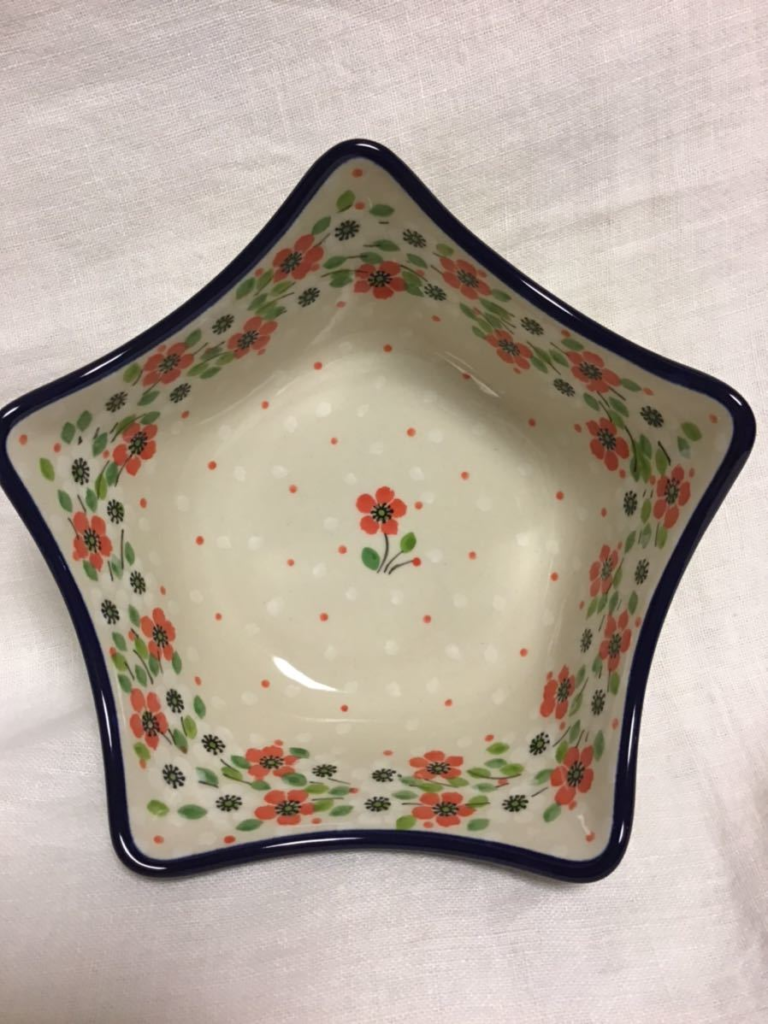
The first and second pictures are my printing results. The third picture is an ancient food container. In the first picture, I adjusted the parameters as much as possible to fit it so that its outline is more similar to that of the third picture. In the second picture, I added Twist and conditional parameters to make the middle more prominent.
Challenges
I encountered the following problems during printing:
(1) How to adjust the parameters. At the beginning, my Slider Range was set very large, [-100, 100]. This is actually unreasonable. You need to set the range according to whether it corresponds to radius, height or thickness, otherwise it will generate objects that you can’t imagine.
(2) Reasonable use of Twist. At first, I thought that adding various advanced operations to objects would make them look more advanced, more complex, and more technical, but I later changed my mind after browsing many artists’ works and ancient art works. If the Twist operation is overused, I get the following shape. Because it is over-rotated, the upper half will be in an incompletely closed state and cannot be printed.

(3)I also thought about printing a vessel with an animal outline. The picture below is in the shape of a cat’s face. However, due to its shape, it seems impossible to add thickness through Grasshopper or Rhino commands.

Reflection on the parametric design process
(1) In ancient times, people would use drawing and mold making to assist in the manufacture of vessels. Nowadays, people tend to use Blender, Rhino and other 3D model design tools as an aid. Compared with the former two, Grasshopper and programming have greatly improved the convenience of parameter adjustment. In addition, in Grasshopper, you can understand the components of the object, points, surfaces, lofts, etc. through each connected battery, so users can create objects with clearer and more visual logic.
(2)Compared with manual operation in Rhino, using function programming allows for greater imagination and can realize more complex and interesting curves and surfaces.
GrasshopperG Code:
Link2(Github):QinghongShao-sqh/Large-Assignment-2-Parametric-Vessels (github.com)
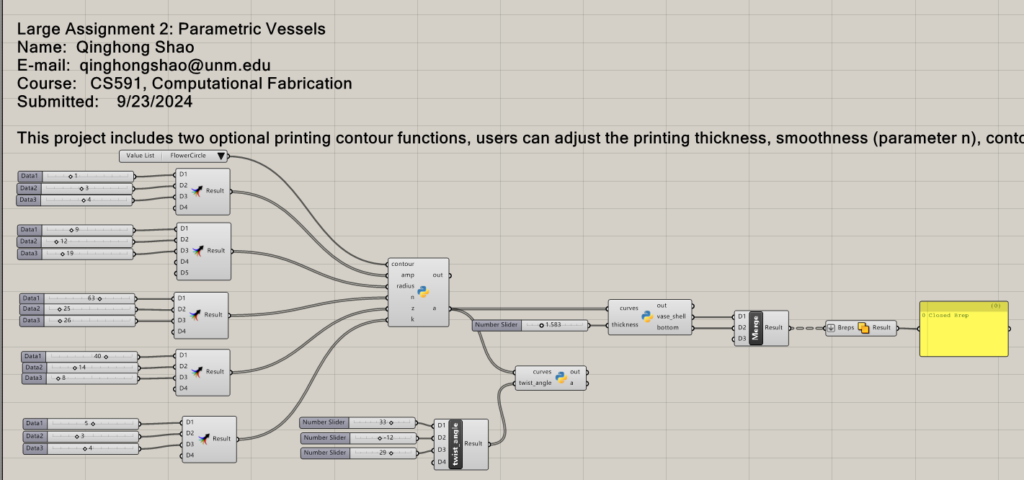
Hi, Qinghong!
I like how your vessels are related to the ancient pottery. It’s amazing how we can replicate ancient hand made objects (pottery) using 3D printing and programming with just few hours or few days. Technology has advanced a lot and our ideas can become reality. Great vessels! Also, for your twist vessel, did you do twist inside your python block or in grasshopper? It look very clean and sharp.
Thanks for your idea, I will try it later.
I’m also excited to use 3D printer to create some artworks, not only based on the PLA material, but also the clay and powder that we can produce the ceramic
Qinghong,
It’s awesome how you used pottery and an ancient food container as the inspiration for your vessels. I also think that you did a great job making it into your own while keeping the similarities very subtle between certain features. I ran into the same challenge as well when attempting to create complex vessels. Though more does sound like it would create a very interesting model, sometimes it becomes a bit too unrealistic to print, especially with how extreme some of the twists can get. You should speak more on the initial edge contour you used in your first vessel, the curvature came out very cool! I wonder what would have happened if you did try to print your other two ideas under your “challenges” section.
Hi Desiree,
Thanks very much for your like! I also think it’s wonderful to be inspired by ancient works!
You are very careful. The first object looks simple, but I tested many parameters of the curvature before I finally found the right shape. I will find its specific parameters. Thank you for your attention! I also hope that I can try to print the failed prints again in the future!